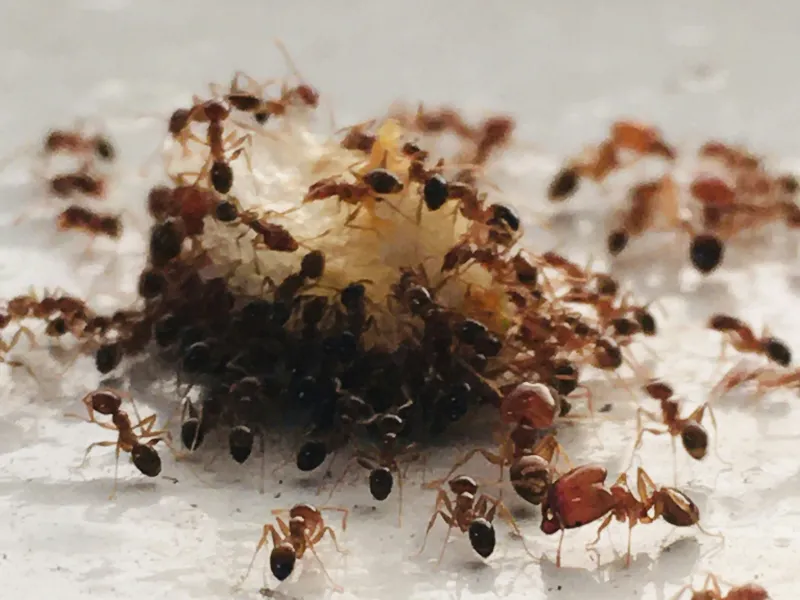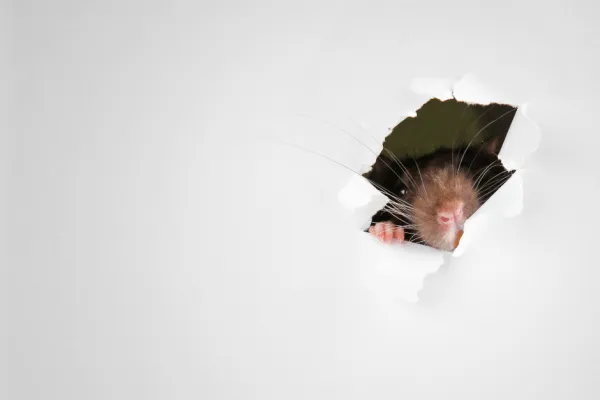Types Of Ants

While ants fulfill important roles within ecosystems, certain varieties can encroach upon our homes and properties, becoming unwelcome guests. Among the most prevalent ant species in our region are pavement ants, carpenter ants, common ants, fire ants, and odorous house ants. Let's explore each species, their behaviors, and why it's preferable to keep them out of our living spaces.
Pavement Ant:
Pavement ants (Tetramorium caespitum) are diminutive, dark-colored ants commonly sighted throughout the Carolinas, particularly in urban and suburban locales. Their name stems from their penchant for nesting beneath sidewalks, driveways, and building foundations. Once indoors, they scavenge for food scraps, particularly favoring sweets and oily substances. While pavement ants aren't known to cause structural harm, their presence can be bothersome, especially if they establish colonies inside your home.
Carpenter Ant:
Carpenter ants (Camponotus spp.) rank among the largest ant species in the Carolinas. Unlike pavement and common ants, carpenter ants can inflict significant structural damage to buildings. They excavate wood to create nesting galleries, often targeting damp or decaying wood. In our region, they frequently infest wooden structures such as decks, porches, and even the structural framework of homes. Early detection of carpenter ant activity is crucial to prevent costly property damage.
Common Ant:
The common ant, also known as the Argentine ant (Linepithema humile), earns its moniker from its widespread presence in both urban and natural environments. These ants are notorious for forming expansive supercolonies with interconnected nests spanning vast areas. Common ants typically infiltrate homes in search of food and water, trailing along walls, floors, and plumbing fixtures. While they don't pose direct health hazards, their sheer numbers and persistent presence can be disconcerting and unhygienic.
Fire Ant:
Fire ants (Solenopsis spp.) are infamous for their aggressive nature and painful stings. They construct large, dome-shaped mounds in open spaces like lawns, parks, and fields. These mounds, often several inches in height and width, house a labyrinth of tunnels and chambers where the ants reside and rear their offspring. Unlike many other ant species, fire ants can sting multiple times, with their venom inducing a burning sensation and potentially triggering allergic reactions in susceptible individuals.
Odorous House Ant:
The odorous house ant (Tapinoma sessile) is another prevalent species in the Carolinas. When crushed, these ants emit a foul odor reminiscent of rotten coconut. They typically nest in moist or decaying wood, as well as within wall voids and around plumbing fixtures. While odorous house ants aren't known for causing structural harm, their intrusion into homes in search of food can be a nuisance.
Reasons to Keep Ants Out of Your Home and Property:
While each ant species possesses distinct behaviors and impacts, several reasons underscore the importance of keeping them away from our living spaces. Firstly, ants can contaminate food sources and spread bacteria, posing health risks to residents. Secondly, their presence can be unsightly and unsettling, particularly when they form trails or congregate in large numbers. Additionally, carpenter ants, in particular, can compromise the structural integrity of buildings, leading to costly repairs.
As DMV residents, comprehending the behaviors and potential risks associated with common ant species is pivotal for effective pest management. By implementing proactive measures to deter ant infestations and promptly addressing any issues that arise, homeowners can maintain a comfortable living environment and enjoy peace of mind year-round.


